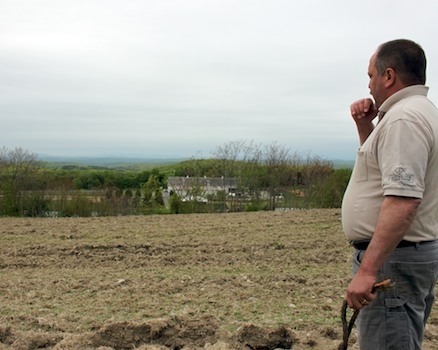Planting Hudson River Valley's Newest Riesling
If you weren't paying attention, you could very easily end up trampling some of Hudson River Valley's newest Riesling vines. "It's a great addition to our portfolio of wines. I think we have a really good site — between the elevation, the hillside, the soil type — it's just a natural variety to have grow here," remarks John Graziano, Millbrook's winemaker since 1984.
To an untrained eye, the plots look like little more than large dirt patches, spanning an approximate three acres on the elevated eastern hillside of the winery's picturesque estate. But then you take a closer look and notice demarcations in the ground — a long stretch of symmetrical rows, and within each, a set of evenly spaced small mounds. Bend down to get closer look still and there it is: the knobby top of a baby Riesling vine, just barely poking out from the mix of light clay and gravel debris.
The obvious question to be asked: Why now?
Graziano admits it's a project that has been talked about and in the works for some time. "For a while now people have been asking us why we don't have a Riesling, especially with our location right here in the River Valley." Though as it turns out, this is not the vineyard's first dance with Riesling. Graziano explained that Millbrook did in fact produce the varietal for a few years in the mid-1980s but it was at a time when it suffered from a bad reputation in the U.S. (Many associated all Rieslings with cheap, mass-produced sweet wines like Liebfraumilch.) Chardonnay was king, and as a result, they decided to concentrate on producing that instead.
The first partial crop (about a ton and a half per acre) is expected for 2013, followed by the first full crop the next year (hopefully three to four tons per acre) — their ultimate goal is the be producing about 600 cases per vintage. "With the first fruit we'll get an initial sense for things like when the fruit will ripen and what its composition is," Graziano explains. He notes that the wine will most likely be fermented and aged in stainless steel given that it's an aromatic white. "It's the best way to retain the freshness and varietal character."
And so the young vines will stay hidden there for the next couple months, keeping secret what is likely to be a significant addition to the winery's already stellar lineup.

